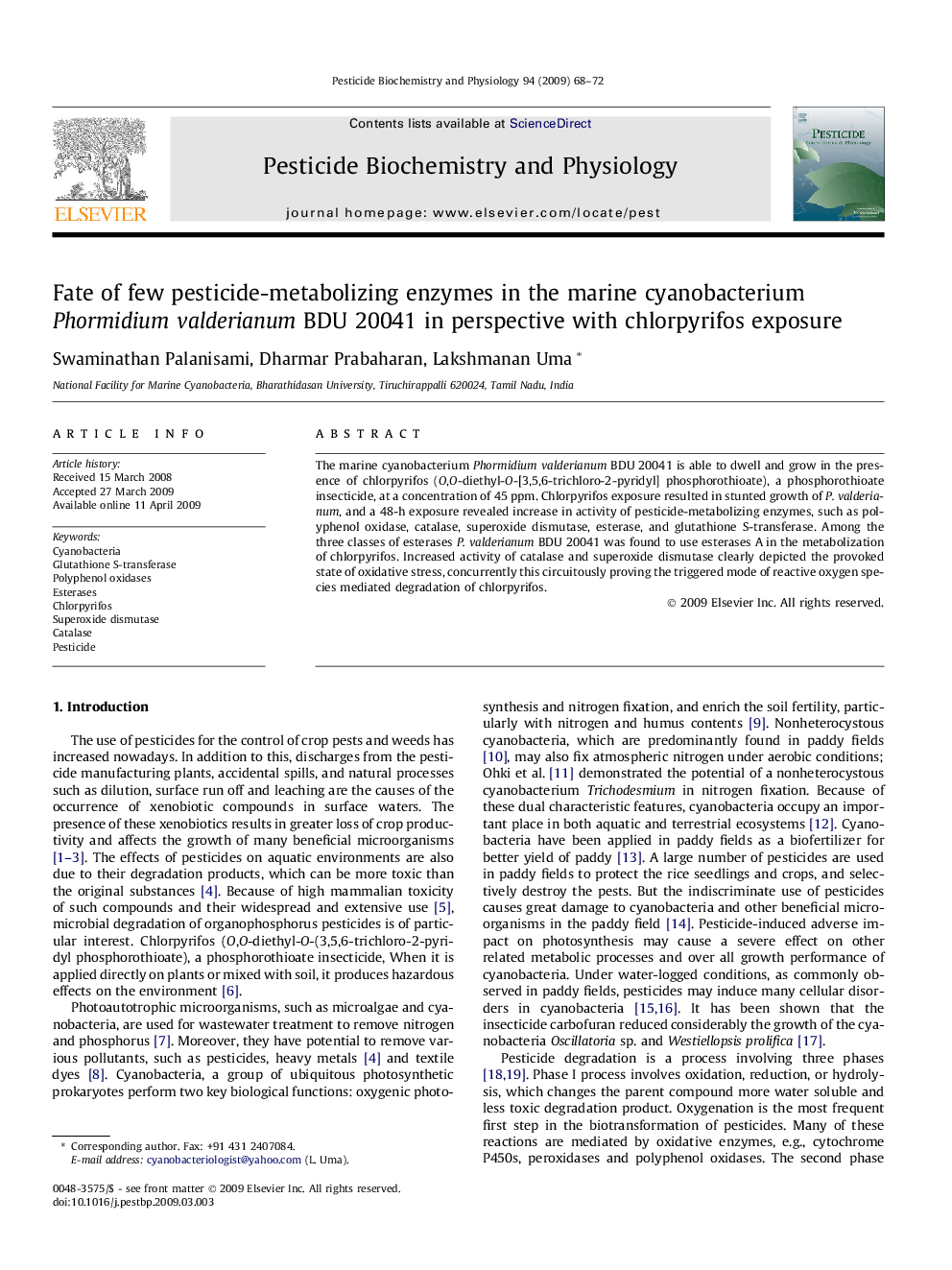| Article ID | Journal | Published Year | Pages | File Type |
|---|---|---|---|---|
| 2009802 | Pesticide Biochemistry and Physiology | 2009 | 5 Pages |
The marine cyanobacterium Phormidium valderianum BDU 20041 is able to dwell and grow in the presence of chlorpyrifos (O,O-diethyl-O-[3,5,6-trichloro-2-pyridyl] phosphorothioate), a phosphorothioate insecticide, at a concentration of 45 ppm. Chlorpyrifos exposure resulted in stunted growth of P. valderianum, and a 48-h exposure revealed increase in activity of pesticide-metabolizing enzymes, such as polyphenol oxidase, catalase, superoxide dismutase, esterase, and glutathione S-transferase. Among the three classes of esterases P. valderianum BDU 20041 was found to use esterases A in the metabolization of chlorpyrifos. Increased activity of catalase and superoxide dismutase clearly depicted the provoked state of oxidative stress, concurrently this circuitously proving the triggered mode of reactive oxygen species mediated degradation of chlorpyrifos.
